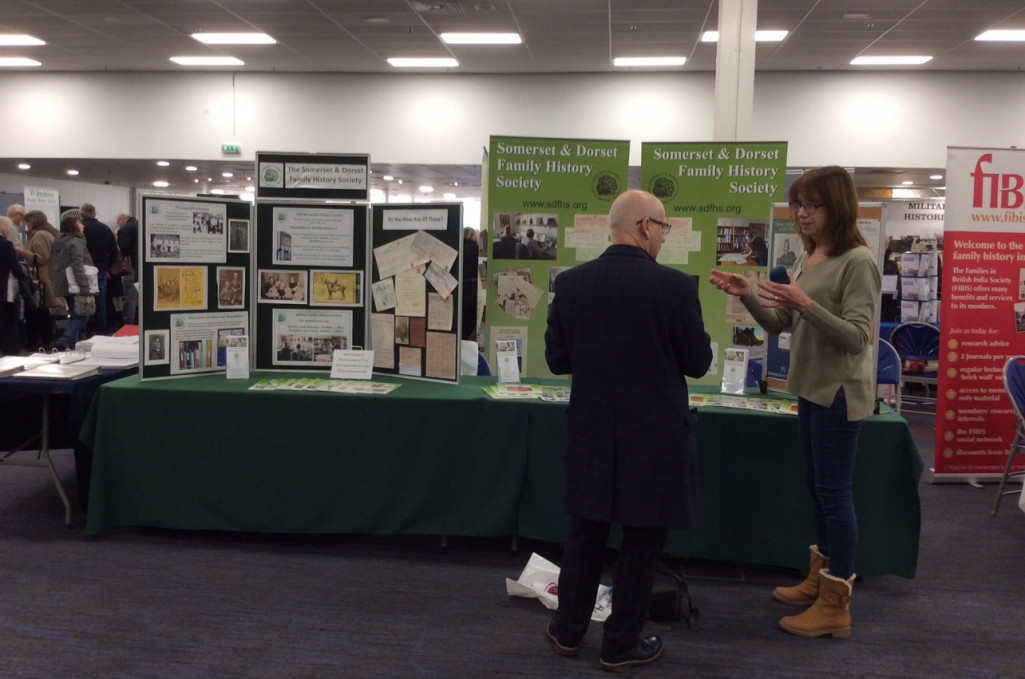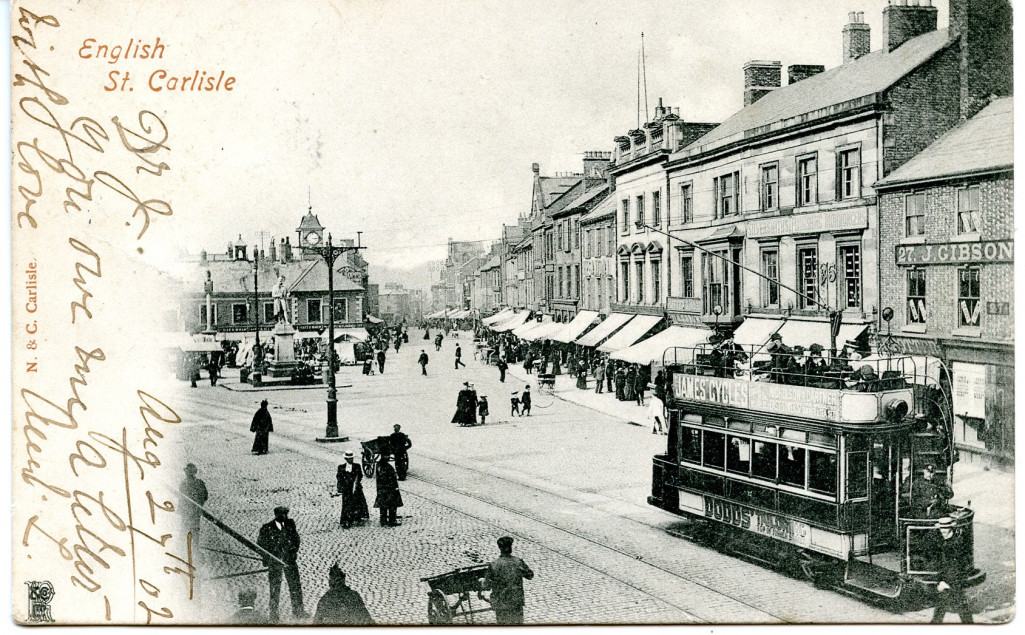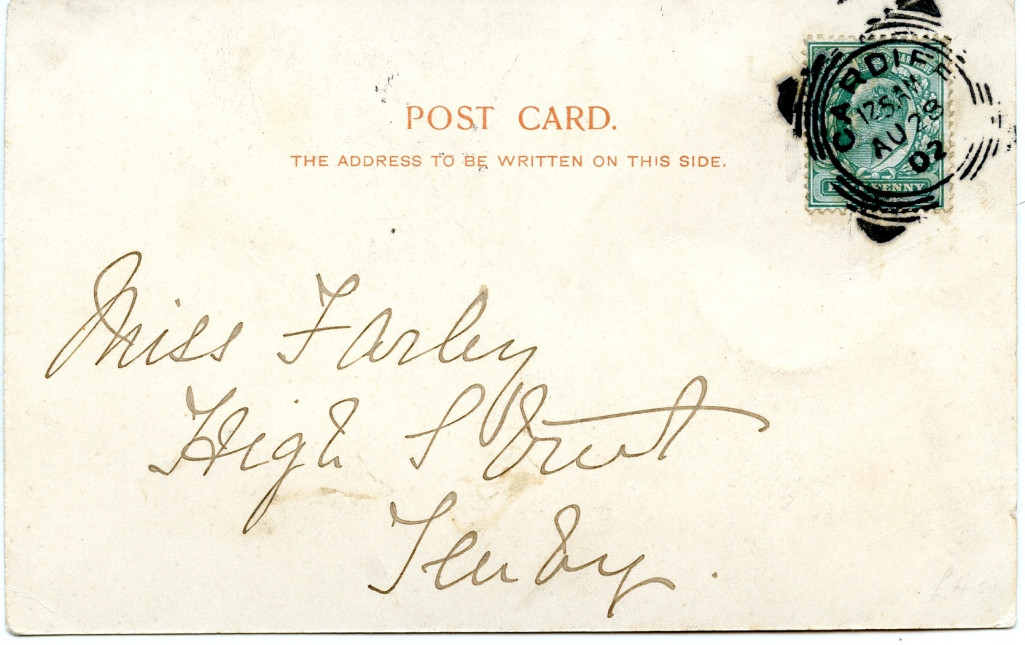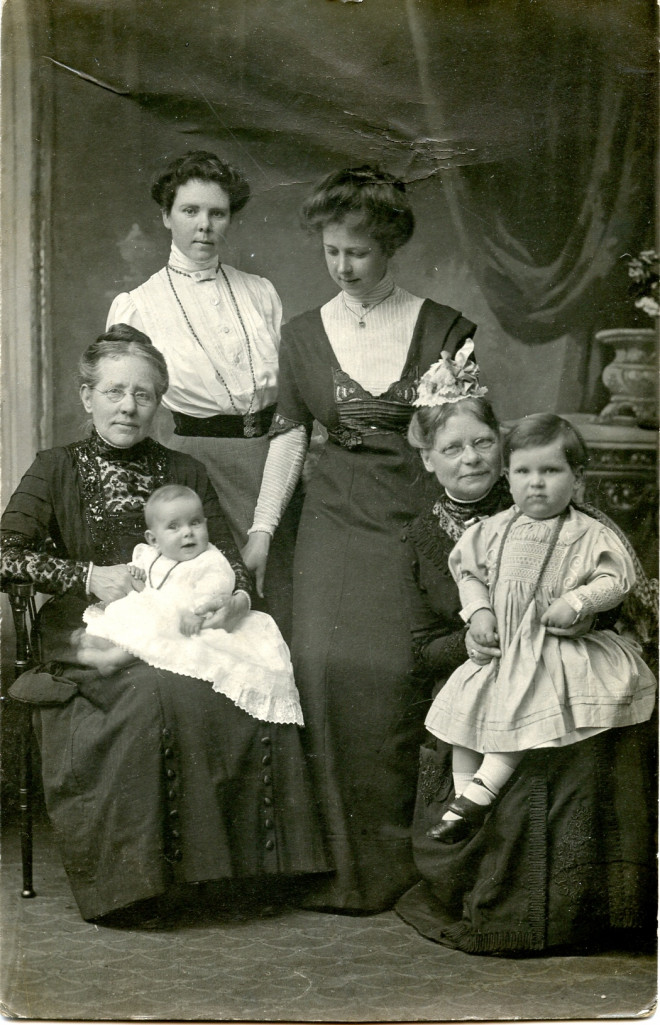A Tale of Two Postcards
Posted on 15th April 2020

On 8 February I was helping the Society’s Fairs Co-ordinator, Anne Warr, on the SDFHS stand at the Family History Show in Bristol and during a brief lull in visitors to our table, I went to check out a stall with postcards for sale. I made a bee-line for the Cumbrian ones and bought half a dozen including this interesting postcard showing a tram in Carlisle.


The message on it and the stamp on the back show that it was posted in 1902. Coincidently that was the year that the ‘divided back’ postcard was first introduced but my Carlisle one has the photograph on the front, the address on the back and the only space for a brief message is at the left-hand side of the image:
Aug 27th 02. Dr J. You owe me a letter with love Aunt L.
Although it is a postcard of Carlisle it was posted in Cardiff to an address in Tenby, Pembrokeshire: “Miss Farley, High Street, Tenby.” Since 1902 was only a year after a census, I was able to find the Farley family living on the High Street at Tenby, headed by Charles Farley, who was born in “Somerset, Bristol.”

One son and three daughters are listed (14-year-old Laura is on the next page) but the only one with the initial ‘J’ is the eldest daughter, 23-year-old Jane L. Farley, who is described as a ‘Stationer’s Assistant’, probably working in her father’s bookshop/stationers, so she is almost certainly the recipient of the postcard. The family would seem to have been comfortably off as they employed one female domestic servant (also on the second page of the census return).
I then started flicking through a box with, probably, hundreds of photographs of unidentified people. I found this very sad as they must all once have been treasured family images that had been discarded as ‘unwanted’ by later generations who had had to clear houses. One photograph in particular caught my eye and, although I have no idea who the people are, it is such a lovely image that I invested £1 to buy it.
The photograph has been printed as a postcard, but was never sent to anyone so there is no message or stamp to help date it. Unlike the tram postcard above, it does have a divided back to allow both the address and any message to be written on the reverse of the photograph, so must have been produced in or after 1902, and the very basic headings would seem, from investigation online, to suggest a production date in the 1910s.

The photograph itself shows what, I am sure, must be a family group, consisting of two elderly ladies who each have a child on their knee, and two standing young women.

I’ve shown the photograph to a few people and family resemblances have been suggested for the two sets of women: that the two elderly ladies could be sisters and/or the two younger women could be sisters. My own instinct is that the central young woman (in the darker dress) is the mother of the two children, and the sister of the other young woman, with the older ladies being either the two grandmothers of the children or, maybe a grandmother and her sister (or, if the parents of the children were cousins, both!).
The photograph was taken in a studio with a patterned carpet and the background drapes and the table with the vase of flowers look like a painted backcloth, rather than actual furniture.
The dresses and hairstyles of the younger women are certainly Edwardian while the dress-style of the central young woman and the seated lady on the left, who both have garments with elbow-length sleeves worn over others with narrow ankle-length sleeves, is dated by Jayne Shrimpton in her ‘How to get the most from Family Pictures’ to around 1909-1914. The head-dress of the seated woman on the right reflects a more conservative old-fashioned style, appropriate for a more elderly lady.
The older of the two children looks to me to be a (very disgruntled) boy dressed in a smocked frock, as was the practice before boys were breeched between the ages of four to eight – a custom which died out around 1920. The younger (much happier) child wears a beautiful gown with a lace edging which he/she has kicked up. The baby’s feet are blurred because it was moving during the camera’s exposure, but its face is in sharp focus and very lively – not always the case with babies in old photographs.
All the evidence would point to this being a family group photograph taken sometime in the 1910s and I wonder if it would be too fanciful to suggest that it was taken to send to a soldier serving in World War I? That might explain the absence of any men in the family group, especially the father of the children.
Patricia Spencer

If you would like, please send us your comment.
